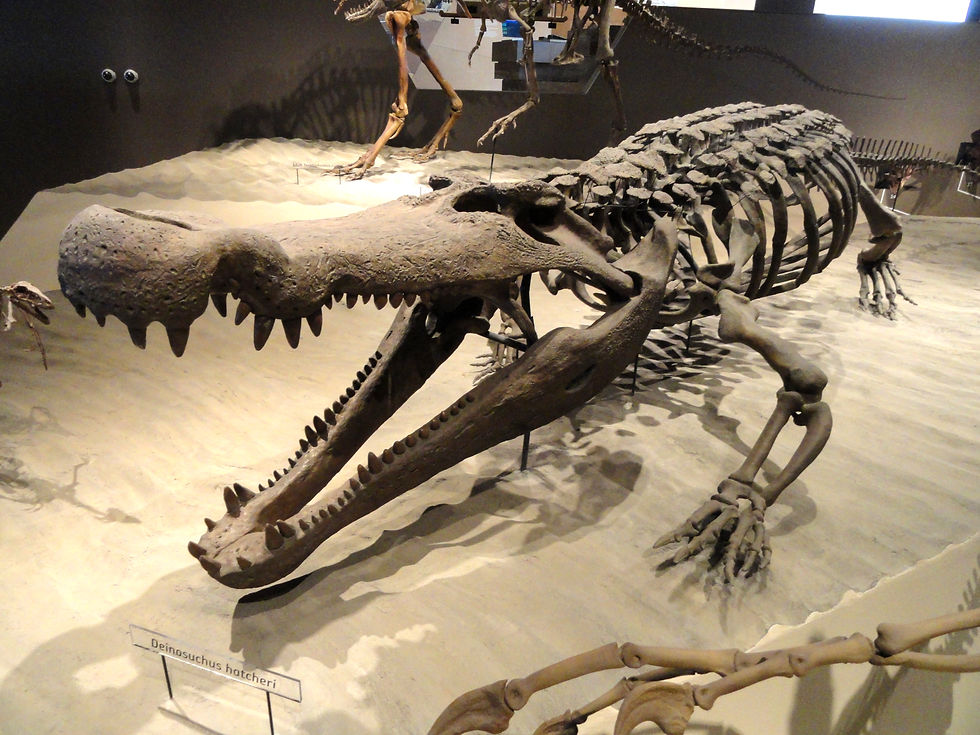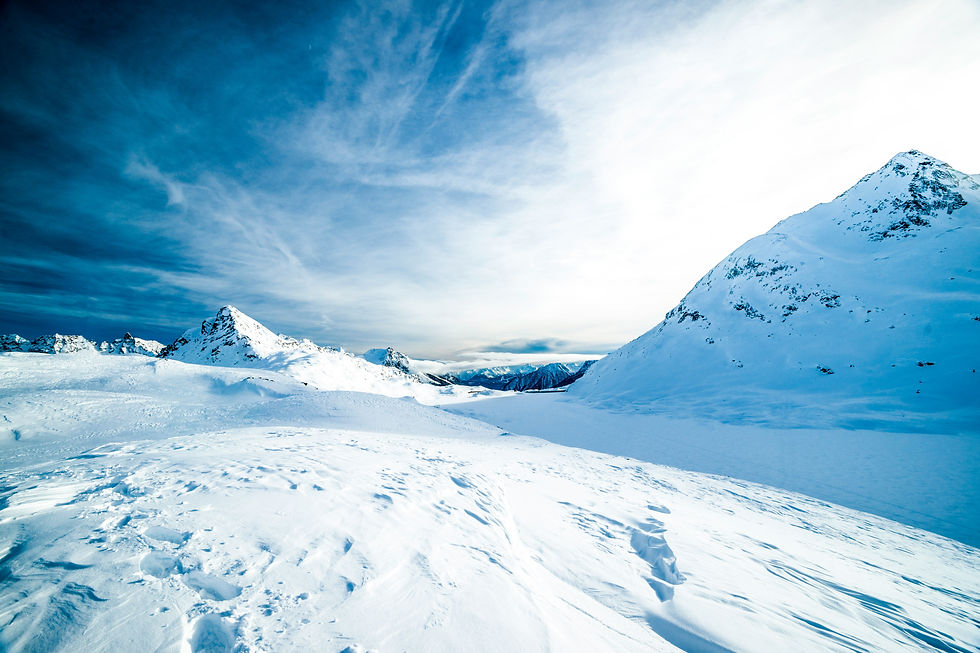The Fezouata Fossils Found On The Edge Of The Sahara
- Wayne Munday
- Nov 9, 2022
- 5 min read
Updated: 6 days ago
The Fezouata Fossils of Jbel Tizagaouine in southeastern Morocco represent one of the most significant fossil discoveries of the Ordovician Period. Preserved within the Fezouata Shales, this exceptional lagerstätte records the earliest phases of the Great Ordovician Biodiversification Event, capturing a pivotal transition from Cambrian ecosystems to complex Ordovician marine life. Located in the Anti-Atlas near Zagora, the site preserves rare soft-bodied organisms alongside trilobites, graptolites, and echinoderms. Recognised by the International Union of Geological Sciences as one of the world’s first 100 Geological Heritage Sites, Fezouata offers unparalleled scientific insight and a compelling destination for fossil tourism and geo-travel in Morocco.

The Fezouata Fossils tell a story of the earliest stages of the Great Ordovician Biodiversification Event (GOBE) and the transition from the Cambrian Period into the Lower Ordovician Period starting approximately 485 million years ago. The Fezouata Shale Fossil Site of Jbel (meaning "mountain") Tizguine rises up 1,908m above sea level in the oasis-dominated Drâa-Tafilalet Region of Zagora Province. Located on the edges of the Sahara this location is among the “First 100 Geological Heritage Sites” designated by the International Union of Geological Sciences (IUGS) in 2022.
Morocco is described as the “gateway to Africa” and lies directly across from Spain by way of the Straits of Gibraltar and borders with the Atlantic Ocean and the Mediterranean Sea. Morocco is a Muslim country influenced by its Berber, Arabian, and European heritage and follows Islamic laws and customs.
Morocco is historically a popular travel destination for almost 700,000 UK visitors each year (not including the COVID pandemic) lured by the contrasts of the cities of Casablanca, Fez, Tangier, Rabat, and Marrakesh and its regions. Morocco offers visitors medieval medinas, souks, beaches, mountains, and the Sahara, (Arabic ṣaḥrāʾ, “desert”) the largest desert in the world. If you are thinking of travelling to Morocco check the travel advice and local laws and customs before you travel.

The Fezouata Shales are up to 1,000 meters in thickness and combine the Lower and Upper Fezouata shale formations. The Fezouata formation spans the Tremadocian and the Floian Stages of the Lower Ordovician. These formations are exposed over large areas of the Anti-Atlas region of southeastern Morocco extending up to 200 km south of the town of Alif and the same again to the west of Zagora. The fossils held within the Fezouata Shales are generally considered to be the "Ordovician Burgess Shale".

The Ordovician Period spans over 41 million years and was the second period of the Paleozoic Era following the Cambrian Period and preceding the Silurian Period. The Ordovician Period was named after the Celtic tribe known as the Ordovices (meaning “highly brave”) who lived in the mountains of North Wales before the Roman conquest of Britain in AD 43 under Emperor Claudius.
The Ordovician Period is characterised by two extraordinary biological events that greatly impacted upon life on Earth. Firstly, the “Great Ordovician Biodiversification Event (GOBE)” which saw the rapid increase in the evolutionary radiation and diversity of marine species. On land, the first primitive plants began to appear on the supercontinent of Gondwana. The Great Ordovician Biodiversification Event (GOBE) represents a second dramatic burst in marine biodiversity after the "Cambrian Explosion".

The second event was the catastrophe of the Late Ordovician Mass Extinction (LOME). This would be the first of the “Big Five” Phanerozoic mass extinctions and the second-most severe mass extinction in Earth's history wiping out approximately 85% of marine species and is the only major mass extinction associated with a 20-million-year ice age of icehouse conditions.
As with the ‘Cambrian Explosion,’ the "Great Ordovician Biodiversification Event" was not a short event. Rather it took place over several tens of millions of years and over three distinct pulses spanning the Tremadocian – Floian Stages, the Darriwilian Stage of the Middle Ordovician and the Katian Stage of the Upper Ordovician. The Fezouata fossils are a story told in Morocco about the earliest stages of the Tremadocian – Floian Stages.

The Fezouata fossils came to prominence in the early 2000s when 50 preserved fossils were found in Zagora by a local fossil collector called Mohamed ‘Ou Saïd’ Ben Moula. These fossils were representative of the late Tremadocian and middle Floian ages of the Lower Ordovician and sparked international interest. These new Paleozoic fauna created from the Great Ordovician Biodiversification Event would go on to radiate across and dominate the seas and oceans for the next 230 million years. The worldwide distribution and evolution of species such as free-floating Graptolites and eel-like Conodonts of the Ordovician Period would be among a group of key species used to correlate fossil deposits.
The radiation of new Paleozoic faunas during the Ordovician Period was driven by the favourable conditions of paleogeography. A combination of rapid sea-floor spreading, warm climates, high sea levels, and the ecological evolution of zooplankton and suspension-feeding organisms allowed them to gorge on an increased abundance of phytoplankton. Sometimes called the "plants of the sea" phytoplankton form the bottom of the aquatic food chain and through the process of photosynthesis and the availability of carbon dioxide, sunlight, and the nutrients of nitrogen, phosphorous, and iron from the intense volcanic activity they supported and fuelled the growth in diversity of other organisms.

There are a number of similarities and differences between the fossil assemblages of both the Burgess Shale and the Fezouata Shale. Unlike the Burgess Shale, the Fezouata fossil record shows a sustained increase in ecological structuring and diversity of species in the marine ecosystem throughout the entire water column. The marine life of the Burgess Shale was mostly restricted to habitats near the sea bed and near shore.
Both fossil records share similar ways of fossil preservation by carbonaceous compression and authigenic mineralisation. Carbonaceous compressions can be loosely compared to creating a detailed photographic negative whereby the carbon residue of an organism is left after sediment compresses the organism over time in anaerobic conditions. Authigenic mineralisation happens in situ during sedimentation either by the precipitation or recrystallisation of minerals replacing the organism's organic body form to produce precise molds and casts.

It is believed that the Fezouata fossils were already dead and decaying on the sea bed of the offshore zone of the continental shelf before they were buried. This zone was below the wave base and at a depth beneath where there is no wave movement and relatively little disturbance. The organisms were covered in periodic storm deposits of well-sorted sand. These conditions are in contrast to the Burgess Shale where living organisms were transported, smothered, and preserved by sediments from periodic landslips from a platform into a basin.
The Fezouata fossil assemblage of preserved soft-bodied animals includes a number of living fossils or holdovers from the Cambrian Period and a number of original common ancestors or crown group taxa that have evolved by the Early Ordovician. The fossils found within the Fezouata Shales include acritarchs, chitinozoans, bivalves, cnidarians, conodonts, echinoderms, gastropods, graptolites, hyolithids, palaeoscolecids, sponges, and trilobites.









